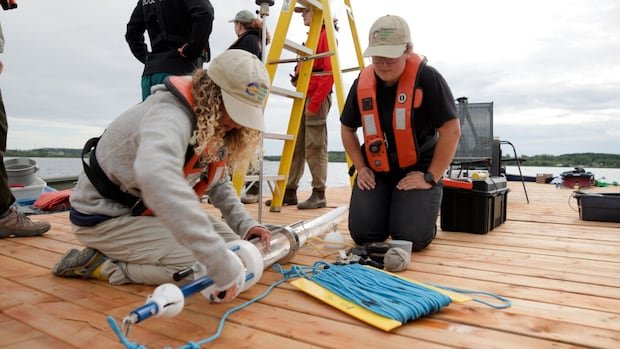Researchers from Laurentian University are delving into historical sediment from lakes in northeastern Ontario to study the impact of industrialization on blue-green algae blooms. Mackenzie Hobbs, a Masters student, believes that understanding past conditions is crucial for managing future outcomes. By analyzing lake sediment, researchers can track changes in nutrient levels, particularly phosphorus, which promote cyanobacteria growth and the formation of harmful algae blooms.
High nutrient levels in lakes, often a result of industrial activities, create an ideal environment for toxic algae blooms. These blooms can pose risks to both humans and animals, sometimes leading to the closure of beaches. Hobbs utilizes indicators like chironomids, the larval stage of flies found in sediment, to assess historical oxygen levels in lakes. By examining diatoms, a type of microalgae sensitive to nutrient levels, she can estimate past phosphorus concentrations.
Liz Favot, Hobbs’s supervisor and a professor at Laurentian University, highlights the importance of identifying lakes with elevated phosphorus levels for potential remediation efforts by municipalities. Additionally, some lakes experiencing algae blooms have low nutrient levels but are impacted by climate change, as warmer water conditions can support cyanobacteria growth.
The research includes studying Apsey Lake, a crucial water source for Espanola, where Hobbs’s findings could influence land use policies near the lake. Joseph Burke, Espanola’s chief administrative officer, emphasizes the importance of Hobbs’s research in guiding future land use planning to mitigate blue-green algae blooms, which have become increasingly prevalent in the area.
Ultimately, this research aims to provide valuable insights that can aid in the conservation and protection of water bodies facing the threat of harmful algae blooms.
